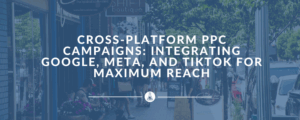Curious about demand gen campaigns and how they can benefit your business? Demand gen campaigns create lasting interest in your products or services by building brand awareness and fostering customer relationships. This article will show you how to craft effective demand gen campaigns, covering essential strategies, key components, and success tips for 2025.
Table of Contents
Understanding Demand Gen Campaigns
Demand generation campaigns are data-driven marketing strategies designed to build awareness and interest in your products or services over time. Unlike lead generation campaigns, which target audiences actively seeking solutions, demand generation encompasses broader strategies aimed at long-term customer relationships. The primary goal is to develop a reliable pipeline that contributes to business growth.
Creating valuable signals content tailored to the audience’s needs is a cornerstone of effective demand generation strategies. Delivering relevant content and engaging in meaningful conversations throughout the customer journey helps brands build trust and establish themselves as industry leaders. This trust is crucial, as it distinguishes your brand from competitors and fosters loyalty.
Moreover, demand generation is about targeting prospects who may not yet be aware of the benefits of your product or service. By focusing on creating awareness and generating interest, demand gen campaigns help brands build a foundation for future lead generation and sales efforts.
Key Components of a Successful Demand Gen Campaign
A successful demand generation campaign involves several key components that may vary based on audience content and platform preferences. Engaging your target audience on social media, building trust, and positioning your product as a problem solver are all essential elements. The choice of tactics depends on the characteristics of your audience and the sector they operate in.
Personalized marketing strategies, driven by well-developed buyer personas, can lead to increased customer retention and sales. Data-driven marketing helps tailor these strategies to the target audience, enabling timely optimizations. Grasping your audience’s needs and preferences is key to creating content that resonates.
Furthermore, utilizing a mix of online and offline channels enhances outreach efforts and audience engagement. Key contributors to the effectiveness of demand generation campaigns include:
Personalized email campaigns
Diverse content types such as blogs and videos
Monitoring key performance indicators
Aligning sales and marketing teams to ensure clear communication about lead origins, fostering more effective demand generation.
Developing Buyer Personas for Better Targeting
Buyer personas are essential for tailoring marketing strategies that resonate with specific audience segments. Created through a combination of demographic data, customer behavior insights, and market research, these personas help you understand your potential customers’ needs, pain points, and preferences. This understanding is crucial for crafting messages that speak directly to your target audience and consumers.
Segmenting leads allows for tailored communication and engagement strategies for different buyer stages. Scaling personalized marketing efforts requires segmenting audiences and using advanced analytics for tailored messaging to generate qualified leads through lead scoring.
Account-based marketing (ABM) is another essential component, allowing for personalized experiences tailored to specific customer pain points.
Multi-Channel Strategies for Demand Generation
Implementing multi-channel strategies can significantly boost demand generation efforts. Businesses that adopt multichannel lead generation strategies often experience annual revenue growth of up to 24%. Using multiple channels can also boost conversion rates significantly, with increases as high as 287% compared to relying on a single channel.
All Google channels and inventory, such as Search, YouTube, Gmail, and Google Display Network, can drive performance in Demand Gen campaigns. Email, social media platforms, and content distribution should be part of your specific channels multi-channel approach. Utilizing buyer personas can optimize lead nurturing content by aligning with the preferred communication methods of your target audience, including google video partners.
Key points about advertising strategies include:
Interactive content can boost engagement by up to 200% compared to static content.
Content syndication expands brand reach by distributing high-quality assets across various platforms, enhancing lead generation efforts.
Optimized targeting can enhance campaign performance by reaching audiences beyond the selected demographic signals.
Advertisers are encouraged to utilize the full inventory in Demand Gen for cross-channel optimization.
Creating High-Impact Creative Assets
High-quality visuals are crucial for establishing brand trust and can significantly influence customer actions. Combining high-quality visuals with minimal text can enhance the effectiveness of ads in demand generation. Creating ads for Demand Gen campaigns is done at the ad group level, allowing for various formats, including video and image ads.
Using a blend of videos and images can enhance audience engagement throughout their decision-making journey on different screens. Incorporating at least three images or videos in various aspect ratios in each ad group can maximize reach and engagement. Utilizing audience insights can help match your creatives to the right audience for improved performance in video action campaigns, youtube shorts, and video assets.
Google’s AI can also help:
Craft tailored visual messages and placements for maximum consumer engagement.
Use A/B testing to refine your creative strategies and boost campaign performance over time.
Include more assets, which positively affects campaign performance and increases the chances of achieving optimal results.
Advanced Audience Targeting Techniques
Advanced audience targeting techniques are essential for effective demand generation campaigns. Lookalike segments are used to expand audience reach by targeting individuals similar to existing customers and target prospects. Predictive data tools provide an accurate performance picture, customer insights, interests, pain points, preferred content, and social channels.
Artificial intelligence is transforming demand generation by enabling data-driven decisions through predictive analytics and personalized content delivery. Utilizing intent data is crucial for understanding prospects’ buying readiness, aiding in prioritization and timely messaging.
Optimizing Budget and Bidding Strategies
Optimizing budget and bid strategy is crucial for the success of demand gen campaigns. Campaign budgets should be set to allow for at least 10 conversions per day for optimal results. When setting up a Demand Gen campaign, it’s important to define your budget and bidding strategy based on your selected campaign goal.
Effective value-based bidding requires campaigns to achieve at least 50 conversions with value in a 35-day period. Setting a target return on ad spend (tROAS) around 20% lower than the historical average can help in campaign optimization and focus.
Using Max conversion value bidding can help maximize conversions and the total conversion value based on defined criteria like performance max sales revenue.
Analyzing and Comparing Performance Across Platforms
Analyzing and comparing performance across other platforms is essential for understanding the effectiveness of demand gen campaigns. New reporting features in Google Ads for Demand Gen campaigns include:
Columns for performance comparison across platforms
Tracking of view-through conversions
Isolation of Demand Gen impact These features aid data-driven decisions.
Successful multichannel strategies require proper tracking to identify which channels yield the highest quality leads. Attribution tracking and conversion tracking are crucial to deciphering which channels contribute the most to conversions and customer acquisition. Tools like Sprout Social and Buffer can help track engagement, sentiment, and impressions for better comparative analysis.
Continuous testing, analysis, and data collection are important for evaluating the effectiveness of marketing content. Insights gained by comparing against competitors can identify engaging content for the target audience. Campaign performance data can be analyzed to improve overall campaign outcomes.
Leveraging Data for Continuous Improvement
Leveraging data for continuous improvement is a cornerstone of successful demand generation. Data-driven insights significantly improve decision-making for future marketing campaigns and product highlights. Analytics play a key role in optimizing demand generation campaigns by providing insights into performance and resource allocation.
Key strategies for improving marketing strategy efforts include:
Aggregating data from various sources to provide a well-rounded view of the customer journey, essential for actionable insights.
Continuous campaign analysis to detect market gaps and adapt to shifts in customer engagement.
Adopting a test-and-learn approach to better optimize creatives based on audience response and campaign goals.
Tools like Dreamdata and HotJar offer insights into user behavior on a website through heatmaps and session recordings, which makes sense for informing demand gen campaign adjustments. Gong.io provides conversation intelligence by analyzing sales calls, helping teams understand customer needs to improve demand generation tactics. This tool helps enhance overall effectiveness.
Regular reviews and updates of buyer personas are necessary to adapt to changing customer preferences and market conditions.
Case Studies: Successful Demand Gen Campaigns
Case studies of successful demand generation campaigns illustrate practical applications and measurable results. For instance, Siteimprove achieved a return of $15 for every dollar spent on their demand generation efforts. Marks and Spencer’s campaign saw a 66% decrease in cost per acquisition due to targeted demand generation strategies.
Other examples include Okdork.com, which experienced a 73% increase in views from new visitors following effective guest posting. An example of engaging influencers for guest blogging significantly boosted visibility and site traffic.
Personalized email campaigns have been shown to increase open rates by up to 50%, and offering incentives such as coupons can encourage users to create content around the brand.
Best Practices for Google Demand Gen Campaigns
To ensure success with Google Demand Gen campaigns, consider the following steps:
Plan your migration early to maintain historical data.
Regularly refresh creative assets to keep ads engaging and relevant, prompting better performance.
Build detailed audience segments based on behaviors and preferences to tailor messaging efficiently.
To optimize reach and improve engagement, consider the following steps:
Utilize data to understand audience trends and adjust targeting accordingly for optimal reach.
Incorporate feedback loops from audience interactions to refine targeting and improve engagement.
Continuously analyze campaign performance and make adjustments to improve return on investment.
Transitioning from Discovery Ads to Demand Gen Campaigns
To transition from Discovery Ads to new demand gen campaigns, start by creating a new campaign in Google Ads, selecting your advertising goal, and choosing Demand Gen as the campaign type.
This step-by-step process ensures a smooth transition and allows you to leverage the full potential of Demand Gen campaigns.
Future Trends in Demand Generation
The future of demand generation is poised to be shaped by several emerging trends. Video content is increasingly favored for engagement, serving multiple purposes such as product demonstrations and testimonials. As social media continues to evolve, it will play a more significant role in demand gen strategies, helping to generate demand and reach new audiences.
Innovative new tactics, such as leveraging AI for predictive analytics and personalized interactions, will drive more sales and attract more traffic. Product feeds and dynamic content will become more prevalent, enabling many advertisers to offer tailored experiences to potential customers and drive demand more effectively through ad placements.
Summary
In summary, crafting effective demand gen campaigns in 2025 involves understanding the fundamentals, developing buyer personas, employing multi-channel strategies, creating high-impact creative assets, and leveraging advanced audience targeting techniques. Optimizing budget and bidding strategies, analyzing performance across platforms, and continuously improving through data-driven insights are also crucial.
By following these best practices and staying ahead of future trends, businesses can drive demand, generate more high-quality leads, and achieve their marketing goals. Embrace the power of demand generation to position your brand as an industry leader and secure long-term success.
Frequently Asked Questions
What is the primary goal of a demand generation campaign?
The primary goal of a demand generation campaign is to create a consistent pipeline that fosters business growth by building awareness and interest in products or services over time. This approach not only attracts potential customers but also nurtures them toward conversion.
How do buyer personas improve demand generation campaigns?
Buyer personas enhance demand generation campaigns by allowing marketers to create targeted strategies that align with the needs and preferences of specific audience segments, ultimately driving higher customer engagement and sales.
Why is a multi-channel approach important in demand generation?
A multi-channel approach is crucial in demand generation as it enhances engagement with the target audience across multiple platforms, leading to higher conversion rates and increased revenue growth. Embracing this strategy ensures you’re effectively reaching potential customers wherever they are.
How can businesses leverage data for continuous improvement in demand gen campaigns?
Businesses can leverage data-driven insights to optimize their demand generation campaigns by identifying market gaps, adapting to changes in engagement, and ultimately improving campaign performance. Regular analysis of these insights ensures ongoing enhancement and relevance in strategies.
What are some best practices for Google Demand Gen campaigns?
To optimize your Google Demand Gen campaigns, focus on early planning for migration, regularly refresh creative assets, develop detailed audience segments, and continuously analyze and adjust campaign performance for better results.
Check out more blog posts:


Top Tips for Creating Ad Creatives Using Gemini and ChatGPT


